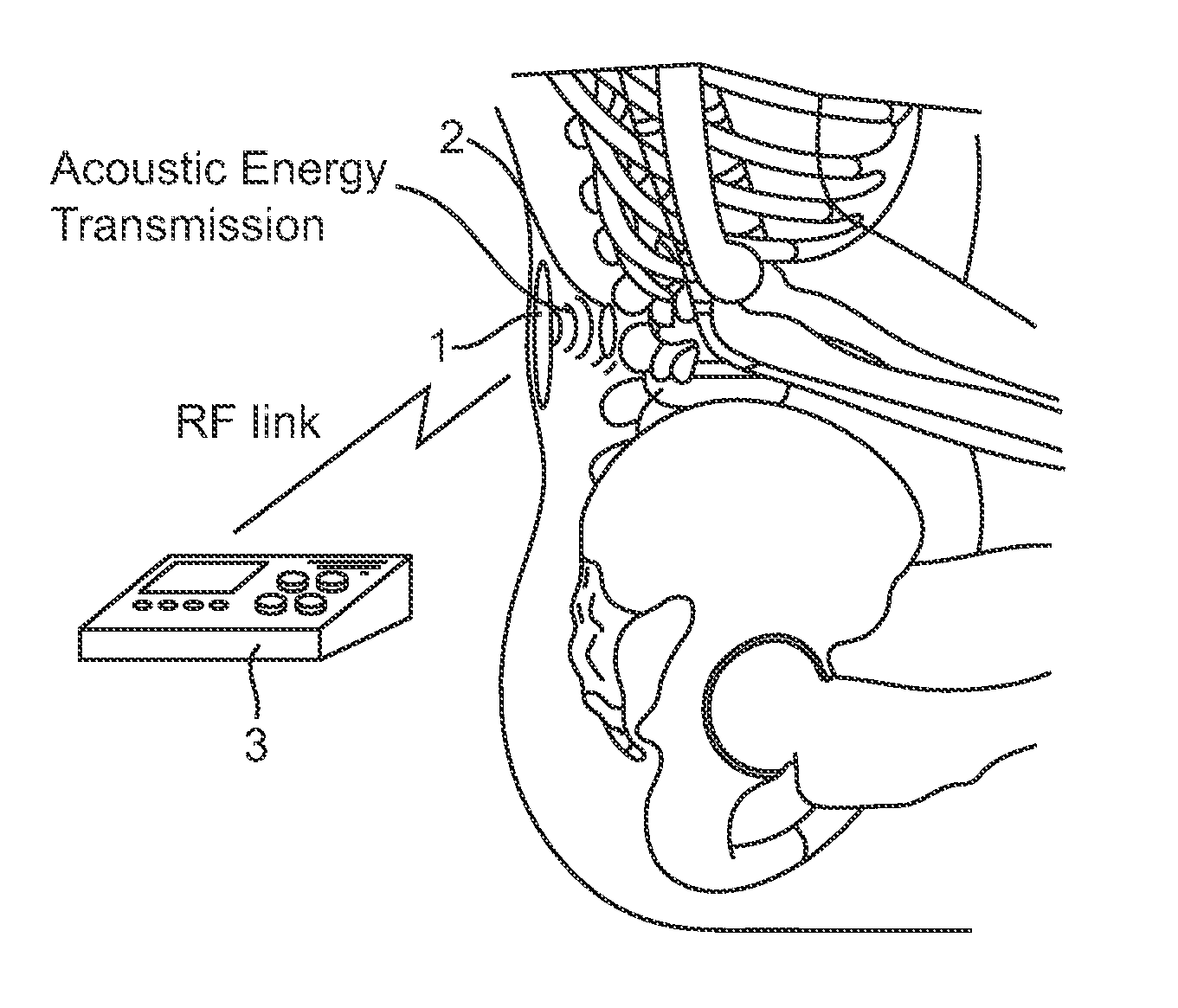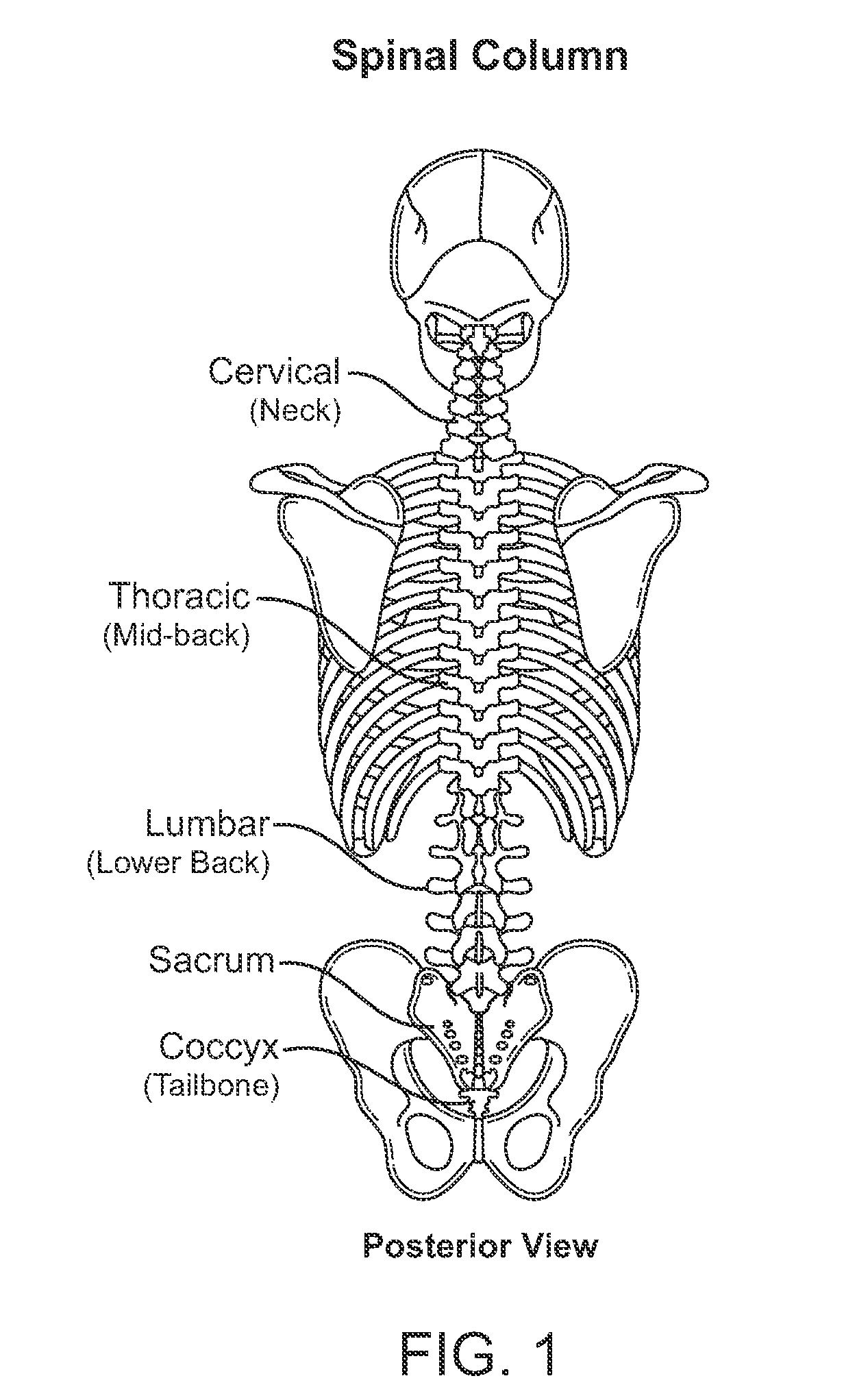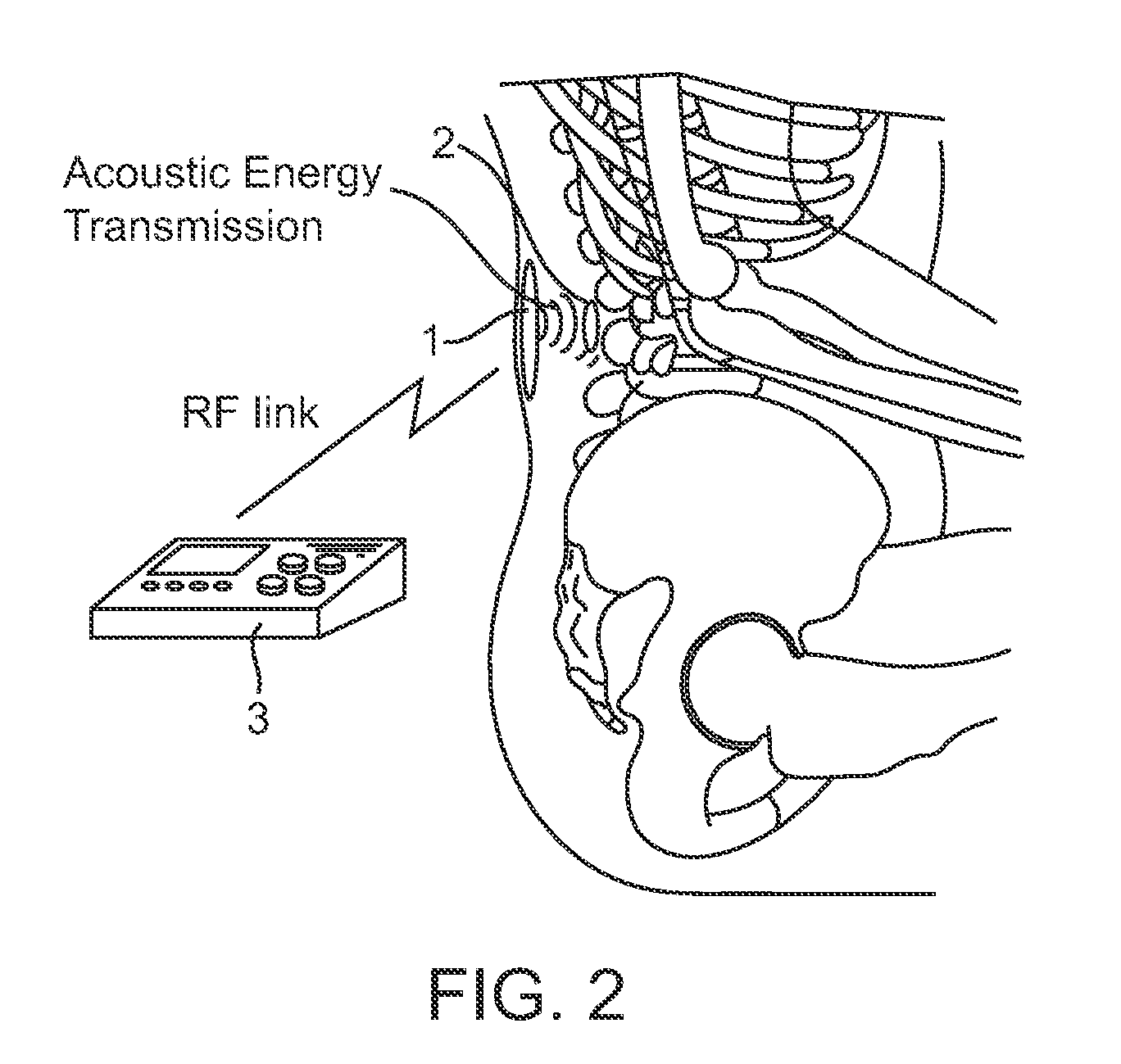Systems and methods for implantable leadless spine stimulation
a technology of implantable lead and spine, applied in electrotherapy, therapy, etc., can solve the problems of imposing size and device life constraints, each approach suffers from significant limitations, and effectively interferes with the transmission of pain signals to the brain, etc., to achieve the effect of reducing pain
- Summary
- Abstract
- Description
- Claims
- Application Information
AI Technical Summary
Benefits of technology
Problems solved by technology
Method used
Image
Examples
Embodiment Construction
[0028]The systems and devices described here comprise a controller-transmitter device that will deliver vibrational energy and signal information to one or more implanted receiver-stimulator device(s) that will convert the vibrational energy to electrical energy of a form that can be used to electrically stimulate nerve tissue in the spine. The vibrational energy can be applied with ultrasound as a single burst or as multiple bursts or as a continuous wave with appropriate selection of the following parameters:
[0029]
ParameterValue RangeUltrasound frequency20 kHz-10 MHzBurst Length (#cycles)3-ContinuousStimulation Pulse Duration0.1 μsec-ContinuousDuty Cycle0-100%Mechanical Index≦1.9
[0030]The controller-transmitter device would contain an ultrasound transducer or transducers of appropriate size(s) and aperture(s) to generate sufficient acoustic power to achieve the desired stimulation at the location of an implanted receiver-stimulator device. Additionally, multiple implanted receiver...
PUM
 Login to View More
Login to View More Abstract
Description
Claims
Application Information
 Login to View More
Login to View More - R&D
- Intellectual Property
- Life Sciences
- Materials
- Tech Scout
- Unparalleled Data Quality
- Higher Quality Content
- 60% Fewer Hallucinations
Browse by: Latest US Patents, China's latest patents, Technical Efficacy Thesaurus, Application Domain, Technology Topic, Popular Technical Reports.
© 2025 PatSnap. All rights reserved.Legal|Privacy policy|Modern Slavery Act Transparency Statement|Sitemap|About US| Contact US: help@patsnap.com



